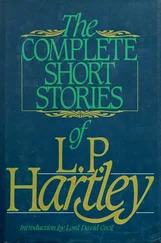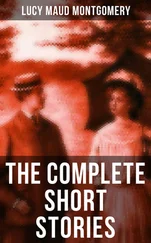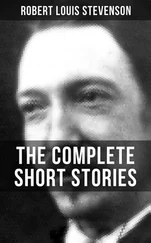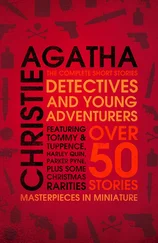She had moved to the edge of the rock, the strands of her hair shimmering across her face in the wind. With a hand she beckoned me towards her.
For the last time I lifted the shell to my ear, and for the last time heard that faint plaintive cry, lost on the reeling air.
‘H-h-e-e-lp!’
Closing my eyes, I let the image of the ancient shore fill my mind, for a fleeting instant saw a small white face watching from the cave mouth. Whoever he was, had he despaired of returning to his own age, selected a beautiful shell and cast it into the sea below, hoping that one day someone would hear his voice and return to save him?
‘Come! It’s time to leave!’ Although she was a dozen feet from me, her outstretched hands seemed almost to touch mine. The water raced around her robe, swirling it into strange liquid patterns. Her face watched me like that of some monstrous fish.
‘No!’
With sudden fury I stepped away from her, then turned and hurled the great shell far out into the deep water beyond her reach. As it vanished into the steep waves I heard a flurry of heavy robes, almost like the beating of leathery wings.
The woman had gone. Quickly I leapt on to the nearest rock of the causeway, slipped into the shallows between two waves and then clambered to safety. Only when I had reached the shelter of the cliffs did I look back.
On the ledge where she had stood a large lizard watched me with empty eyes.
1964
The disappearance – or, to put it less euphemistically – the theft of the Crucifixion by Leonardo da Vinci from the Museum of the Louvre in Paris, discovered on the morning of April 19, 1965, caused a scandal of unprecedented proportions. A decade of major art thefts, such as those of Goya’s Duke of Wellington from the National Gallery, London, and collections of impressionists from the homes of millionaires in the South of France and California, as well as the obviously inflated prices paid in the auction rooms of Bond Street and the Rue de Rivoli, might have been expected to accustom the general public to the loss of yet another over-publicized masterpiece, but in fact the news of its disappearance was received by the world with genuine consternation and outrage. From all over the globe thousands of telegrams poured in daily at the Quai d’Orsay and the Louvre, the French consulates at Bogota and Guatemala City were stoned, and the panache and finesse of press attaches at every embassy from Buenos Aires to Bangkok were strained to their not inconsiderable limits.
I myself reached Paris over twenty-four hours after what was being called ‘the great Leonardo scandal’ had taken place, and the atmosphere of bewilderment and indignation was palpable. All the way from Orly Airport the newspaper headlines on the kiosks blazoned the same story.
As the Continental Daily Mail put it succinctly:
LEONARDO’S CRUCIFIXION STOLEN
£5 Million Masterpiece Vanishes from Louvre
Official Paris, by all accounts, was in uproar. The hapless director of the Louvre had been recalled from a Unesco conference in Brasilia and was now on the carpet at the Elysée Palace, reporting personally to the President, the Deuxieme Bureau had been alerted, and at least three ministers without portfolio had been appointed, their political futures staked to the recovery of the painting. As the President himself had remarked at his press conference the previous afternoon, the theft of a Leonardo was an affair not only for France, but for the entire world, and in a passionate plea he enjoined everyone to help effect its speedy return (despite the emotionally charged atmosphere, cynical observers noticed that this was the first crisis of his career when the Great Man did not conclude his peroration with ‘Vive La France’).
My own feelings, despite my professional involvement with the fine arts – I was, and am, a director of Northeby’s, the world-famous Bond Street auctioneers – by and large coincided with those of the general public. As the taxi passed the Tuileries Gardens I looked out at the crude half-tone illustrations of da Vinci’s effulgent masterpiece reproduced in the newspapers, recalling the immense splendour of the painting, with its unparalleled composition and handling of chiaroscuro, its unsurpassed technique, which together had launched the High Renaissance and provided a beacon for the sculptors, painters and architects of the Baroque.
Despite the two million reproductions of the painting sold each year, not to mention the countless pastiches and inferior imitations, the subject matter of the painting still retained its majestic power. Completed two years after da Vinci’s Virgin and St Anne, also in the Louvre, it was not only one of the few Leonardos to have survived intact the thousand eager hands of the retouchers of four centuries, but was the only painting by the master, apart from the dissolving and barely visible Last Supper, in which he handled a composition with a large landscape and a huge gallery of supporting figures.
It was this latter factor, perhaps, which gave the painting its terrifying, hallucinatory power. The enigmatic, almost ambivalent expression on the face of the dying Christ, the hooded serpentine eyes of the Madonna and Magdalene, these characteristic signatures of Leonardo became more than mere mannerisms when set against the huge spiral concourse of attendant figures that seemed to swirl up into the distant sky across the Place of Bones, transforming the whole image of the crucifixion into an apocalyptic vision of the resurrection and judgment of mankind. From this single canvas had come the great frescoes of Michelangelo and Raphael in the Sistine Chapel, the entire schools of Tintoretto and Veronese. That someone should have the audacity to steal it was a tragic comment on mankind’s respect for its greatest monuments.
And yet, I wondered as we arrived at the offices of Galleries Normande et Cie in the Madeleine, had the painting really been stolen at all? Its size, some 15 feet by 18 feet, and weight – it had been transferred from the original canvas to an oak panel – precluded a single fanatic or psychopath, and no gang of professional art thieves would waste their time stealing a painting for which there would be no market. Could it be, perhaps, that the French government was hoping to distract attention from some other impending event, though nothing less than the re-introduction of the monarchy and the coronation of the Bourbon Pretender in Notre Dame would have required such an elaborate smoke-screen.
At the first opportunity I raised my doubts with Georg de Stael, the director of Galleries Normande with whom I was staying during my visit. Ostensibly I had come to Paris to attend a conference that afternoon of art dealers and gallery directors who had also suffered from thefts of major works of art, but to any outsider our mood of elation and high spirits would have suggested some other motive. This, of course, would have been correct. Whenever a large stone is cast into the turbid waters of international art, people such as myself and Georg de Stael immediately take up our positions on the bank, watching for any unusual ripple or malodorous bubble. Without doubt the theft of the Leonardo would reveal a good deal more than the identity of some crackpot cat burglar. All the darker fish would now be swimming frantically for cover, and a salutary blow had been struck at the official establishment of senior museum curators and directors.
Such feelings of revenge obviously animated Georg as he moved with dapper, light-footed ease around his desk to greet me. His blue silk summer suit, well in advance of the season, glittered like his smooth brilliantined hair, his svelte rapacious features breaking into a smile of roguish charm.
Читать дальше












